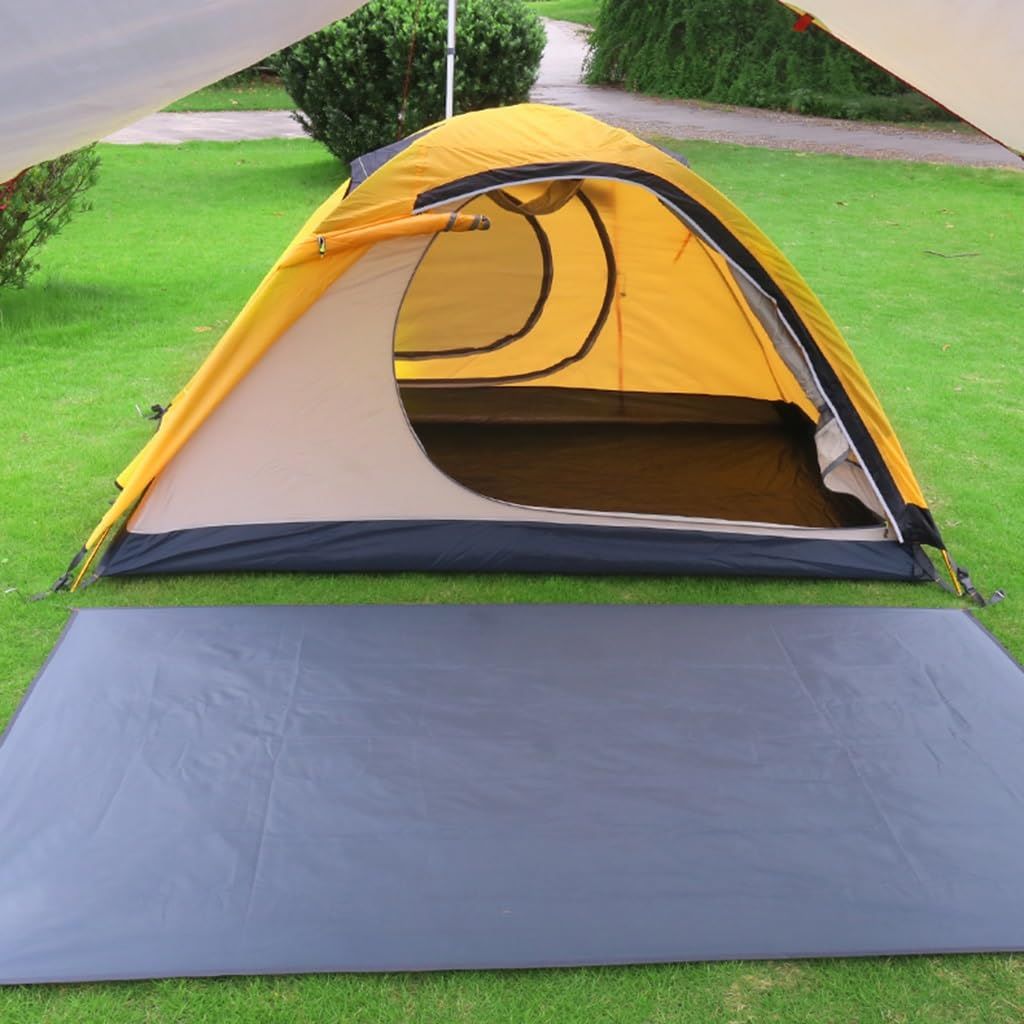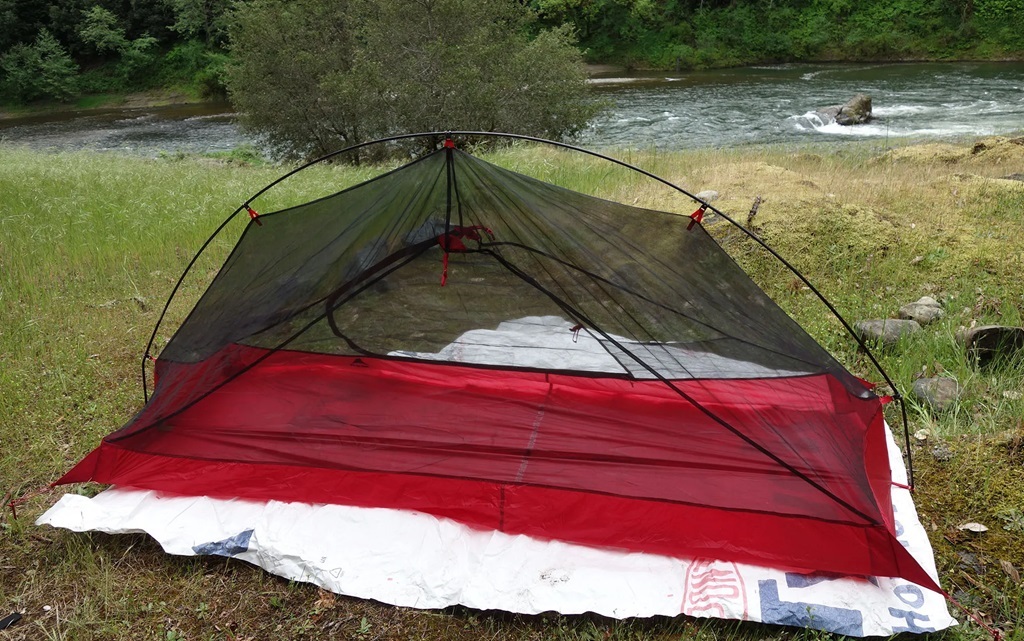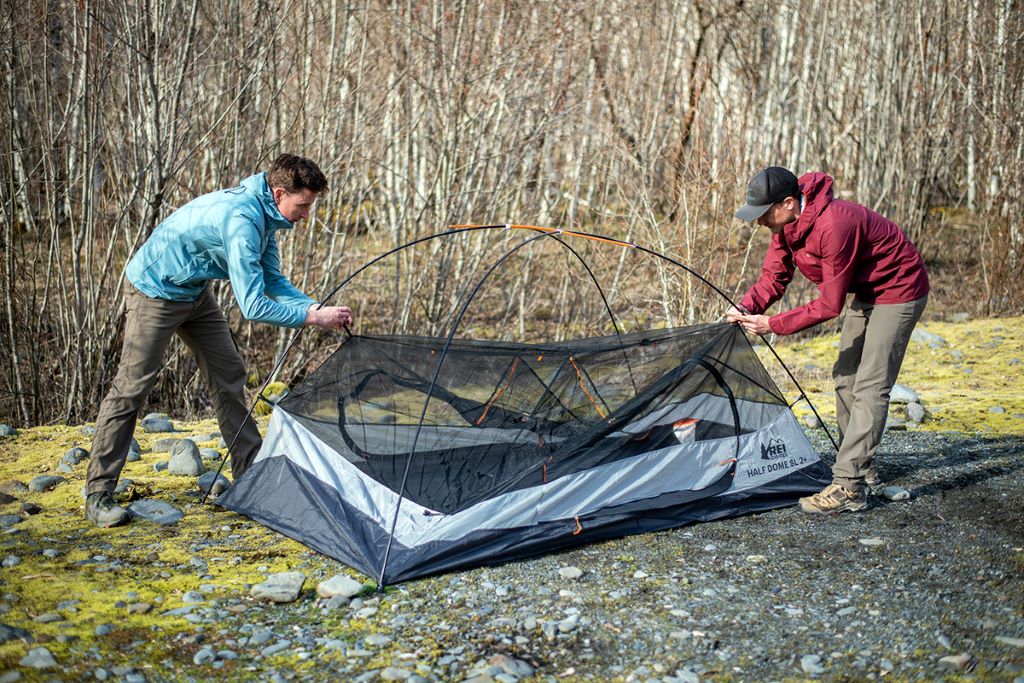
15 Feb What is a Tent Footprint?
Think of your tent floor as the delicate skin of your shelter while camping. Now, imagine pitching that tent on the rugged, unpredictable ground in the great outdoors. Ouch! A tent footprint adds that much-needed superhero-like barrier between your tent’s base and the wild world. Let’s explore exactly what is a tent footprint and how this simple addition makes all the difference.
What Is a Tent Footprint?

Simply put, a tent footprint is a protective groundsheet that sits directly underneath your tent floor. They’re designed with these important purposes in mind:
- Durability: Protect your tent floor from the wear and tear caused by rocks, sticks, and abrasive ground surfaces. It’s like adding an extra layer of armor for your tent.
- Waterproofing: Many footprints are made from waterproof materials that create an additional barrier against moisture seeping in from the ground. Say goodbye to waking up in a surprise puddle!
- Cleanliness: Footprints keep your tent cleaner by providing a layer between your floor and any messy elements on the ground like dirt and mud.
Do I Need One?
The short answer is – it depends on where you’re camping and how much you value extending your tent’s lifespan. Many modern tents have tough, waterproof floors, but a footprint will always give you that extra insurance that goes a long way. They’re especially useful in these situations:
- Rough Terrain: Camping on rocky ground filled with pebbles, sticks, or pine cones increases the risk of punctures. A footprint absorbs the impact and minimizes damage
- Wet Weather: Even slightly damp ground and sudden rain can lead to puddles forming under your tent, creating discomfort and moisture buildup. A footprint keeps things dry.
- Long-Term Use: Investing in a footprint gives your tent longevity. You’ll save money in the long run by not having to replace or repair your tent floor as often.
Understanding Tent Footprint Construction
Here’s a breakdown of materials and design:
- Materials: Tyvek (a strong, water-resistant house wrap material), polyethylene (often called polycro, lightweight but less durable), nylon, and polyester are common options.
- Cut: Some footprints are made specifically for the shape of your tent model, while others are cut slightly smaller than your tent, ensuring the edges won’t stick out, collect water, and wick it upwards.
DIY Footprint vs. Purchasing
Deciding between purchasing a footprint or going the DIY route can be tricky. Let’s weigh the pros and cons:
Purchasing a Footprint
- Pros: Convenience, perfect fit, often includes reinforced grommets for staking
- Cons: Can be an added expense
DIY with Tyvek or Polycro
- Pros: Affordable, lightweight option, customizable sizes
- Cons: Potentially less durable, less form-fitting
Practical Uses Beyond Camping
Think a tent footprint is just for camping? Think again! They are quite versatile, especially if you like spending time outdoors:
- Picnic Blanket: Need a clean, dry spot for your picnic? Your footprint transforms into an easy ground cover.
- Gear Shield: Laying your footprint beneath your backpack will keep it cleaner and away from mud.
- Emergency Shelter: If an unexpected situation occurs, your footprint can serve as a makeshift tarp or cover.
Tips for Using a Tent Footprint
Getting the most out of your footprint takes a bit of finesse. Follow these guidelines:
- Placement: Position your footprint where you plan to pitch your tent, and make sure it’s slightly smaller than the tent’s base to prevent water from pooling and getting in.
- Staking: While footprints typically lie flat on their own, in windy conditions, use your tent stakes to secure the corners of your footprint.
- Folding: To avoid trapping moisture, never fold and pack away a wet footprint with your tent. Dry both separately when you get home.
- Care: Footprints will endure some wear and tear. Regularly check yours for damage, and patch up any rips or holes to ensure proper function.
Choosing the Right Tent Footprint
With all the information so far, you might wonder how to pick the best footprint for your camping setup. Consider these factors:
- Compatibility: The ideal choice is a footprint tailored specifically to your tent model. These offer a secure, perfect fit. Check with your tent manufacturer to see if they offer one.
- Weight vs. Durability: Ultralight backpackers might opt for thin, lightweight footprints like Tyvek or Polycro for weight savings, whereas car campers can prioritize more durable materials like nylon or heavier-duty polyesters.
- Budget: Like all outdoor gear, prices vary. Determine your needs and see what type of footprint aligns with your budget and camping style.
Alternatives to Traditional Footprints

While a designated footprint offers specific benefits, there are a few alternatives to consider, depending on your goals:
- Multi-Purpose Tarp: If you already carry a larger tarp, try folding it to a size slightly smaller than your tent floor. While not as snug-fitting as a footprint, it provides protection and doubles as a tarp for other camp needs.
- Space Blanket: In a pinch, an emergency space blanket can act as a temporary protective barrier in dry conditions. Be aware that this is a very short-term solution with limited effectiveness.
The Verdict: Are Footprints Worth It?
For many campers, the investment in a tent footprint is a no-brainer. Here’s why:
- Peace of Mind: Knowing your tent floor has reliable protection goes a long way in the backcountry. You can camp confidently in less-than-ideal conditions.
- Long-Term Tent Care: Think of a footprint as preventative medicine for your tent. You’ll be keeping it in top shape for years to come.
- Added Comfort: Even a thin footprint adds an extra layer between you and the hard ground, making for a slightly more comfortable sleeping experience.
- Resale Value: A well-maintained tent holds its value better. Your footprint investment may pay off if you plan to sell your tent down the road.
FAQs
Can I put a footprint inside my tent?
No. A footprint acts as a barrier between the ground and your tent. Placing it inside defeats its purpose of moisture and puncture protection.
Isn’t my tent floor waterproof enough?
Many tent floors are durable and waterproof, but even the best can wear down over time. A footprint protects the investment of your tent floor, giving your whole setup longevity.
Should I put a footprint on soft ground like pine needles?
Even soft ground can hide sharp objects, and pine needles can still be abrasive. If you want maximum tent protection, use a footprint regardless of the surface.
Is a footprint the same as a tarp?
While both are groundsheets, footprints are smaller, lighter, and made specifically to fit under your tent. A larger tarp has multiple uses beyond just being a ground cover.
What if I can’t find a footprint to match my tent?
If a specifically sized footprint isn’t available, getting a similar size or opting for the DIY route with Tyvek or Polycro are reasonable alternatives.
Conclusion
A tent footprint might seem like a small, optional addition, but when exploring the great outdoors, small gear makes a big difference. Exploring the ultimate guide to camping showers complements the joy of no-cook camping, allowing you to embrace the simplicity of outdoor living with the added luxury of refreshing showers, making every meal and moment in the wilderness truly incredible.


No Comments